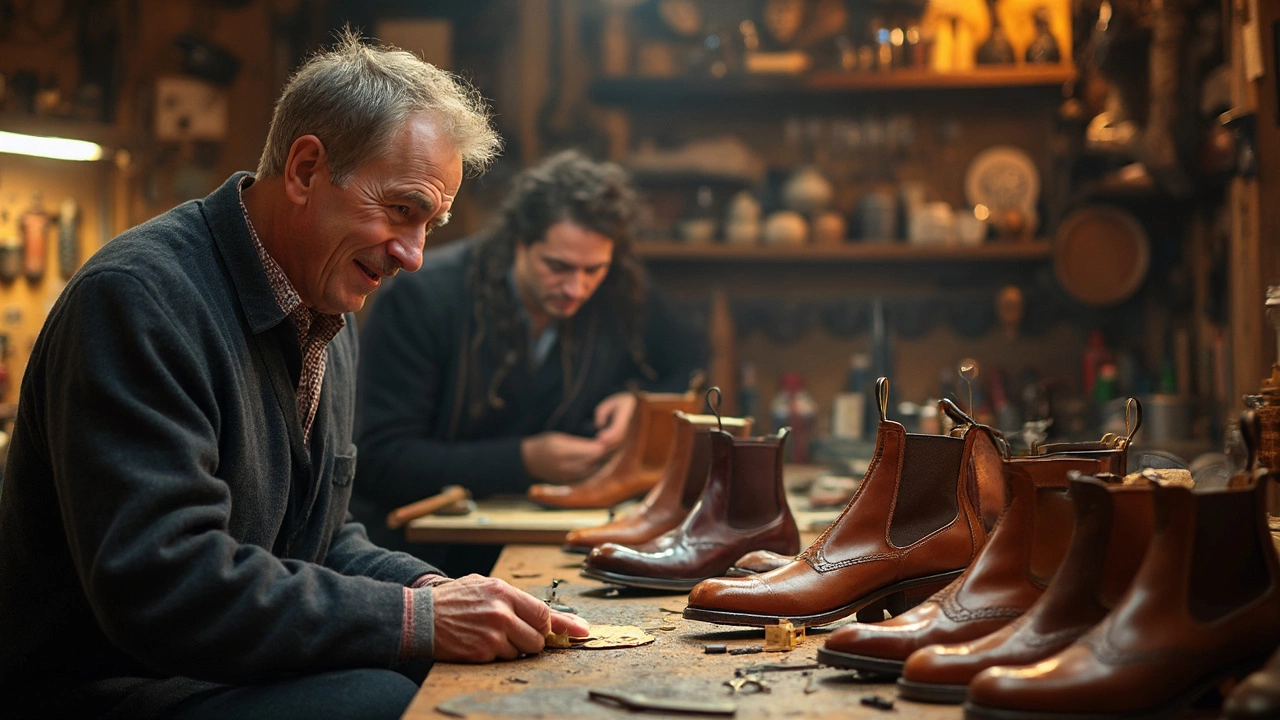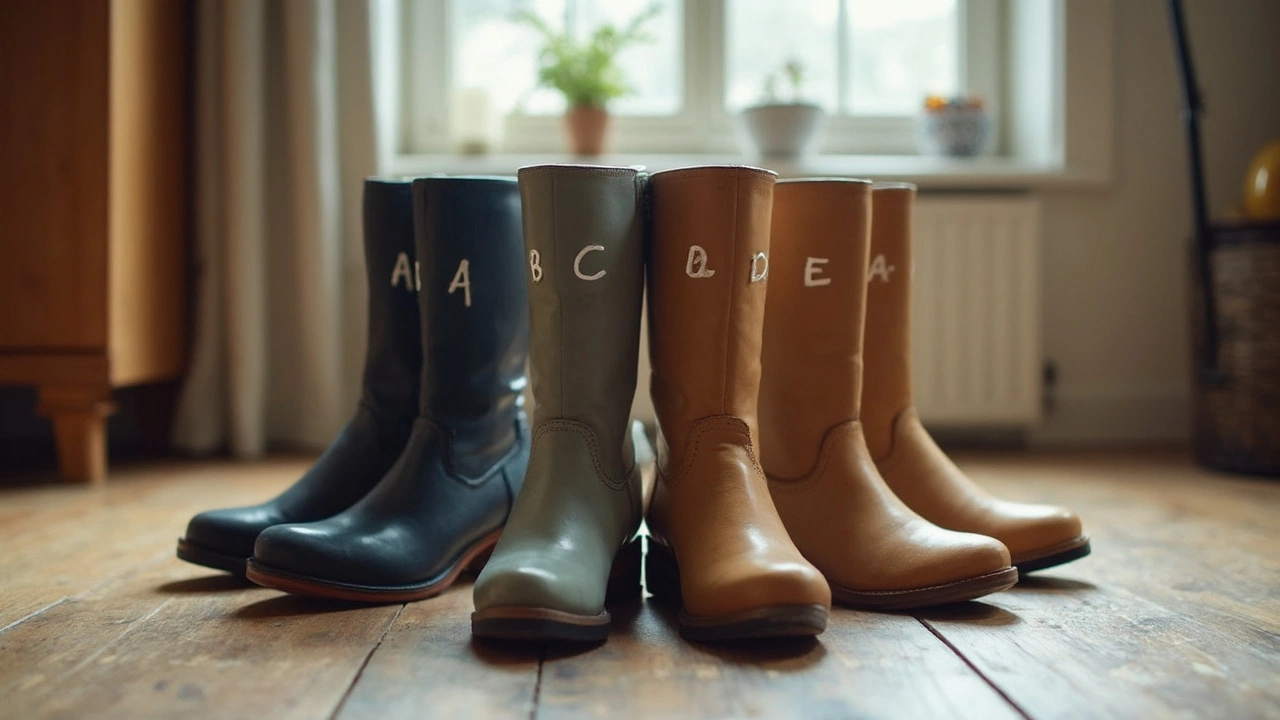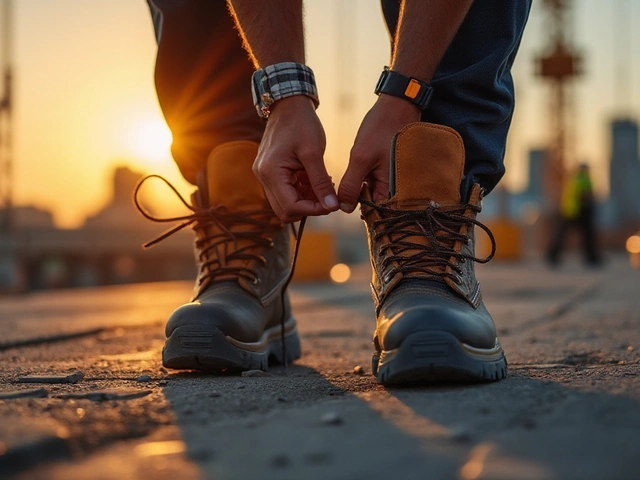So, you've been browsing for that perfect pair of women's boots and stumbled upon the mysterious 'D.' Seriously, what does 'D' mean in the world of boots? It's all about the width. In women's footwear, 'D' indicates a wide width. This is a game-changer if you’ve ever crammed your poor toes into what felt like a vice grip.
Boot width isn’t just a random letter—it makes a huge difference. Imagine buying new boots that don’t pinch or leave blisters. Sounds dreamy, right? That’s what knowing your size can do for you. And honestly, having the correct width means comfort, support, and style don't have to be strangers anymore.
- Decoding the D: Boot Width Explained
- Why Boot Width Matters
- How to Measure Your Foot Width
- Tips for Finding the Right Fit
Decoding the D: Boot Width Explained
Alright, let’s tackle what the 'D' in boots really signifies because confusion in boot shopping is the last thing anyone needs. In the wide world of women's footwear, 'D' marks the spot for wide widths. This is vital info because shoe sizes aren't just about length.
Let’s break it down. Most standard women's boots come in a 'B' width, which is considered medium. But when you see a 'D,' it's designed for wider feet. This can be a lifesaver if you've ever spent a party or workday wishing you could kick off those too-tight boots.
Understanding boot width is crucial, especially with variations in size standards around the world. For instance, did you know that European sizes don't always mention width, so it can be a bit of a guessing game when shopping for brands across the pond?
| Width Code | Description |
|---|---|
| A | Narrow |
| B | Medium |
| D | Wide |
| EE/EEEE | Extra Wide |
To make things easier, some brands have their own unique sizing charts or use their own terms for widths. When buying women's boots online, always check the specific brand's size guide. You can usually find a sizing chart with measurements in inches or centimeters alongside where they state the D in boots.
Once you grasp the concept of boot widths, you’ll find your shopping becomes way less of a hassle. Keep in mind, knowing whether a 'D' width—or even wider—is for you can turn a painful shopping experience into a triumphant one, with your feet feeling fabulous and room to breathe.
Why Boot Width Matters
If you've ever tried on a pair of boots only to walk around feeling like a sardine in a can, you know that boot width isn't just a minor detail—it's a make-or-break factor for comfort. A boot that fits well can actually prevent problems like calluses, blisters, and even long-term foot issues.
According to the American Podiatric Medical Association, poorly fitting shoes are the leading cause of foot problems. The APMA has stated,
"Selecting the right shoe size and width is crucial for maintaining overall foot health and avoiding unnecessary discomfort."
In the world of women’s footwear, each width offers a different level of space for your foot. The typical widths you'll encounter are B (medium) and D in boots (wide). For most folks, the 'B' width works fine, but a 'D' width can be a lifesaver for those with wider feet!
Wearing the wrong size can lead to more than just discomfort. You might see faster wear and tear on your expensive boots, and let's face it, no one wants their pricy boots to become deformed from improper wear.
Just imagine finally slipping into boots that comfortably accommodate your feet without pinching or stretching. This shift not only boosts your day-to-day comfort but also helps in maintaining the boots' original shape and longevity.
Simply put, knowing your width size—and especially choosing wisely between standard and wide widths like the 'D'—can transform your boot-wearing experience from tight and awkward to effortlessly stylish and comfortable.

How to Measure Your Foot Width
Alright, figuring out your foot width can feel like a puzzle, but it’s really straightforward once you know how to do it. Getting this right means no more guesswork when shopping for women's boots. You'll thank yourself the next time you slide into a pair that's just the right width.
First thing's first, you’ll need a few things: a piece of paper, a pencil, and a ruler or measuring tape. Ready?
- Place the Paper on the Floor: Make sure it’s on a flat surface like hardwood or tile for the best accuracy.
- Stand on the Paper: Put your foot on it and make sure you’re standing straight, with your weight distributed evenly. This gives the most accurate measurement.
- Trace Your Foot: Holding the pencil upright, trace around the foot. This is easier if you get a buddy to help, but you can manage solo too.
- Measure the Widest Part: Once you're done tracing, use your ruler to measure the distance across the widest part of your foot. This is usually around the ball of your foot.
Simple, right? But here's a pro-tip: measure both feet. It’s common to have one foot a bit larger than the other. When picking D width boots, opt for the size that fits your larger foot. A little roominess can be better than a snug fit that’s uncomfortable after a few hours.
Understanding your foot width not only helps you choose the right boots fit but also prevents foot health problems down the road. It's the little tweaks like these that make all the difference.
Tips for Finding the Right Fit
Finding the right fit in women's boots, especially when we're talking about the D in boots, can feel like a bit of a mystery at times. But with a little know-how, you'll be strutting comfortably in no time. Here's what you need to keep in mind.
- Know Your Measurements: Before anything else, measure your foot width. Grab a piece of paper, stand straight, and trace your foot. Measure across the ball of your foot; that's the wide part across your toes. Record your measurement, and don’t forget, each brand can vary slightly, so read their specific sizing tips too.
- Try Them On in the Afternoon: Our feet swell throughout the day. Buying boots in the afternoon or evening ensures you're accommodating this natural change. It's a simple trick, but it's crazy effective.
- Think About Socks: Are you a thick socks kind of person or do you prefer those ankle-hugging thin socks? This can affect the fit, so try on boots with the type of socks you plan to wear.
- Walk Around: Seems obvious, but when trying on boots, take some steps. Strut around the store or your home if shopping online. Trust me, you want to be sure they’re comfy from the get-go.
- Listen to the Boot: Are they making squeaky noises? Or slipping at the heel? These are signs that the fit isn't right. A well-sized boot should feel snug but not tight and secure without pinching.
Here's a handy guide to help you match your foot measurements with the typical widths:
| Width Measurement | Boot Width |
|---|---|
| 3.2 to 3.5 inches | B (Medium) |
| 3.6 to 4.1 inches | D (Wide) |
| 4.2 inches and above | EE (Extra Wide) |
By keeping these tips and tricks in mind, you’ll quickly figure out where you stand (pun intended) in the world of women's boots sizing. And soon, the days of battling uncomfortable, ill-fitting boots will be a thing of the past!





